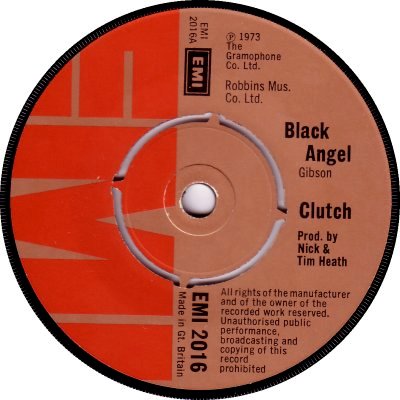
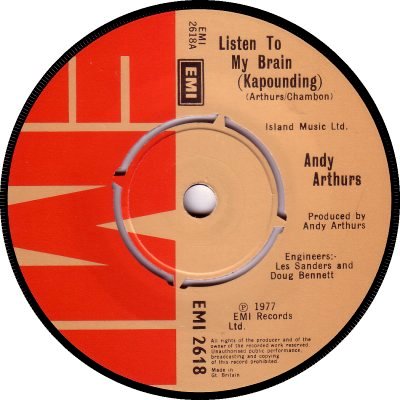
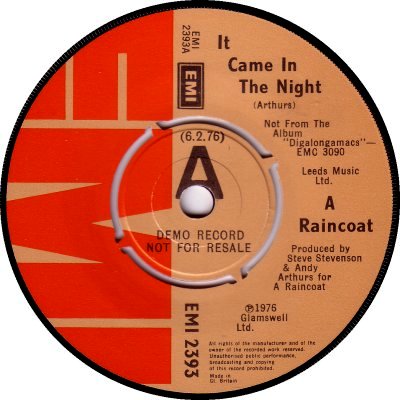
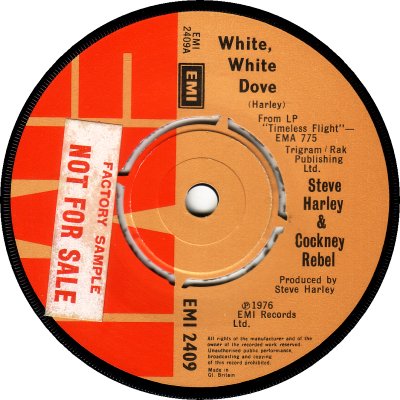
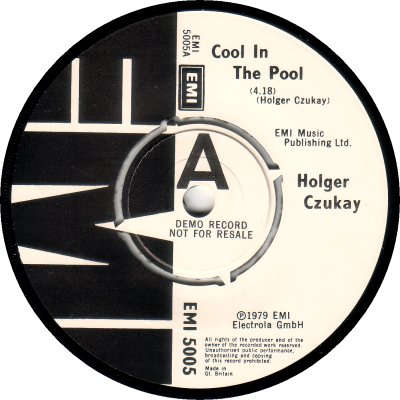
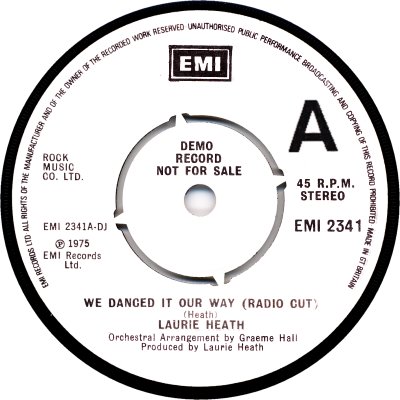
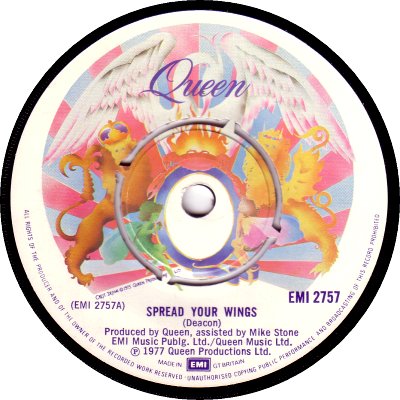

EMI dates back to 1931, when the (UK) Columbia Graphophone Company amalgamated with Parlophone and the Gramophone Company (HMV) to form Electric and Musical Industries, thus bringing some of Britain's most popular record labels under one roof. Licensing agreements with (US) Columbia and RCA Victor expired in at the ends of 1952 and 1955 respectively; the company made up for the loss by acquiring 90% of the shares of the flourishing Capitol Records (q.v.). During the '50s, '60s and early '70s Electric and Musical Industries enjoyed huge success in the field of Popular Music, under Sir Joseph Lockwood; at the time it was the best-known and most successful record company in the world. With its subsidiaries Parlophone and HMV, it could call on the talents of the Beatles, the Beach Boys, the Hollies, Pink Floyd, Cilla Black, and others too many to list. 1969 saw the founding of Progressive Rock offshoot Harvest (q.v.); 1971 brought a change of name, to EMI. The hits kept on coming in the '70s, from artists as diverse as Queen, Kate Bush, Cliff Richard, and the Wurzels. Mind you, it has to be said that the company's ratio of hits to records released wasn't all that good: for example, in 1978 163 issues yielded 14 hits, 6 of which, while having EMI catalogue numbers, were on or licensed labels such as Carrere and Rolling Stones.
There was an important acquisition in 1978, when EMI bought the United Artists record company, but EMI was itself on other companies' shopping lists. In July 1979 Paramount / Gulf & Western put in a £70 million joint-venture bid for it ('Music Week', 21st July), but the proposed 50% purchase fell through ('MW', 22nd September 1979). Towards the end of the year, however, Thorn Electrical Industries made a bid worth £169 million for the company ('MW', 17th November). It was put before the shareholders, who accepted it; as a result Thorn was to change its name to Thorn EMI ('MW', 15th December). The story of EMI in the '80s and after is beyond the scope of this site.
Plans for an actual EMI label were reported in 'MW' of the 9th of December 1972, which said that it was to be introduced worldwide and that as a consequence of its arrival EMI was to cut back the number of its domestic labels from January 1st. 'MW' of the 27th of January 1973 said that the new label had been launched, and named the labels which were to be phased out - they were ones with a great deal of history behind them: Parlophone, Columbia, Regal-Zonophone and Stateside (In the event Columbia limped on as an MOR outlet; while Parlophone, after spending much of the rest of the decade as a vehicle for The Beatles individually and collectively, enjoyed a revival in the '80s). The EMI label offered a wide variety of music, both original and licensed, from Rock and Pop through MOR to Disco, Soul and Jazz. One of its more unusual items was a 1975 EP 'Sounds From A Mother's Womb' (EMLP-1), which came with a booklet and retailed at 85p ('MW', 26th April). More notoriously EMI put out the first Sex Pistols single, 'Anarchy In The U.K.' (EMI-2566; 11/1976), only to suffer a crisis of confidence and withdraw it shortly after it entered the Top 50. The company could also claim that it released the first digital single, albeit in 12" form: it was Morrissey / Mullen's 'Love Don't Live Here Any More' (12-DG-1001; 5/1979).
Being a large company, EMI had its fair share of organizational difficulties. In the summer of 1970 'Record Retailer' reported that it was considering simplifying its catalogue numbers by changing to an all-numerical system; but the idea was dropped. A big change took place early in 1972, with a move from Hayes, where the company had been for 61 years, to a new purpose-built production and distribution centre in Southall. 'Billboard' of the 15th of July, reporting on the move, said that the new site had been in preparation for two years and that the over the course of a 'long weekend' 6,000,000 records, all the paperwork and associated systems had been transferred, along with 500 staff. The new building had cost £10,000,000, and would increase the company's manufacturing and distribution capacities by 50%. Maximum production at Blyth Road had been 2,000,000 unites per month; at Uxbridge Road it would be 3,000,000. The article noted that the move had been accomplished 'without a hitch' and finished, optimistically, that no systems had been installed which might give rise to teething troubles. That optimism proved to be misplaced. The following month 'MW' of the 26th of August there had been problems at the plant and EMI had had to have custom pressings done both in the U.K. and abroad. 'MW' of the 7th of October described the difficulties as 'serious' and said that LP releases for November and December had been cancelled in an attempt to clear a 1.5 million record order backlog. The difficulties were overcome but a couple of years later the company stopped doing custom pressings, on the ground that it had no spare capacity. 'MW' named some of the companies affected as Abbey, Word, Tangent, Oryx and Unicorn ('MW, 2nd February 1974).
Arrangements for the selling and promotion of EMI product also appear to have been problematic, as they were subject to both proposed and actual alterations during the '70s. 'MW' of the 9th of December 1972 broke the news that the company was to have two separate sales forces: one for EMI product, the other for distributed lines. The arrangement can't have been altogether satisfactory, as less than eighteen months later came a proposal to split the sales force into a 'British Product' one and an 'American Product' one ('MW', 11th May 1974). Pilot schemes were carried out ('MW', 10th August) but they met with a mixed reaction from dealers, and 'MW' of the 21st of December revealed that plans for the nationwide introduction of the system had been postponed. 'MW' of the 8th of February 1975 changed the system's status from 'postponed' to 'abandoned'. A different scheme was proposed in the summer of 1976. Under it EMI's operations would be divided between two autonomous sections: a 'Licensed Labels Division', which would handle licensed material from both Britain and America, and a 'Pop Group Repertoire Division', with responsibility for the EMI, Harvest, Parlophone and Capitol labels. In what seems to have been a slightly modified form this proposal was adopted. 'MW' of the 8th of January 1977 announced that EMI's 'Licensed Labels Division' would deal with the marketing and promotion of all the UK and American labels under EMI's wing - Motown, MCA, Rocket, Rak, Mountain, MAM, Fantasy and other, smaller, ones - while an 'Own Repertoire Division' would look after the house labels. 'MW' of the 14th of May was able to report that the new divisions would be operational from the 1st of July.
In the event the split between the Group Repertoire and Licensed Repertoire divisions was to last for roughly a couple of years. 'MW' of the 7th of July 1979 carried the news that the two sales forces were to be reunited; then 'MW' of the 19th of January 1980 reported that the Licensed Repertoire Division was to be closed and that there were to be redundancies. The week after that 'MW' (26th January) claimed that chaos had followed the closure of the LRD: eight of the labels licensed to EMI were to be transferred to Liberty-United at the end of January; Island and Chiswick were to remain with EMI, while the recently formed Cobra label was to be discontinued, its artists transferring to EMI. The licensed labels involved in the move were Motown, Bronze, MAM, RAK, Hurricane, Source, Stax and Fantasy. The summer of 1980 saw the announcement of the amalgamation of EMI and Liberty-United; according to 'MW' of the 5th of July there were rumours of up to a hundred more redundancies and EMI managing director John Bush had resigned after only being in the position for a couple of months.
To return to the EMI label. Only one design was used during the '70s; it can however be found in various shades from brown-and-red (1) to fawn-and-red (2). In addition the position of the label credits changed slightly. For no obvious reason, from October 1978 until the end of the decade the occasional single came with a black-and-white label; a demo copy is shown above (5). Rock band Queen had their own label designs from November 1976, a privilege which was sometimes granted to other bands; the seventh scan shows the first design they used. Demo singles generally had issue labels overprinted with a smallish central black 'A' and the appropriate text (3), but some were merely issues with 'FACTORY SAMPLE NOT FOR SALE' stickers put on them (4) - those stickers also appeared on demo singles on many other EMI-group labels. The white label with 'EMI' in a box at the top (6) was generally used for records which were not intended for issue; the one shown above was used on a single that had been specially edited for radio play. During the '70s not-for-issue records were generally numbered in the PSR-300s (which became the PSR-400s); except, it would appear, in the case of special edits of issued singles.
Numbering started in the EMI-2000s and climbed rapidly; it jumped from 2999 to 5000 in 1979. A short series of 'Talking Tales' EPs for children was issued in November 1976; each of these records accompanied a story book, and they had their own CEP-0 numerical series. Two singles licensed from production company Red Bus Records were given their own RB-100 series - Red Bus started its own label in 1980, not early enough for this site, but because of those catalogue numbers I've taken the executive decision to give it its own page (q.v.). The discography below only covers the 1970s. There are several gaps in it, and any help in filling those gaps will be welcome. Some singles on different labels, such as Carrere and Rockney, had EMI numbers; these are marked appropriately. Dates given are generally those supplied by Music Master; any discrepancies in them may be due to the record being reissued or re-promoted and MM using the later date.



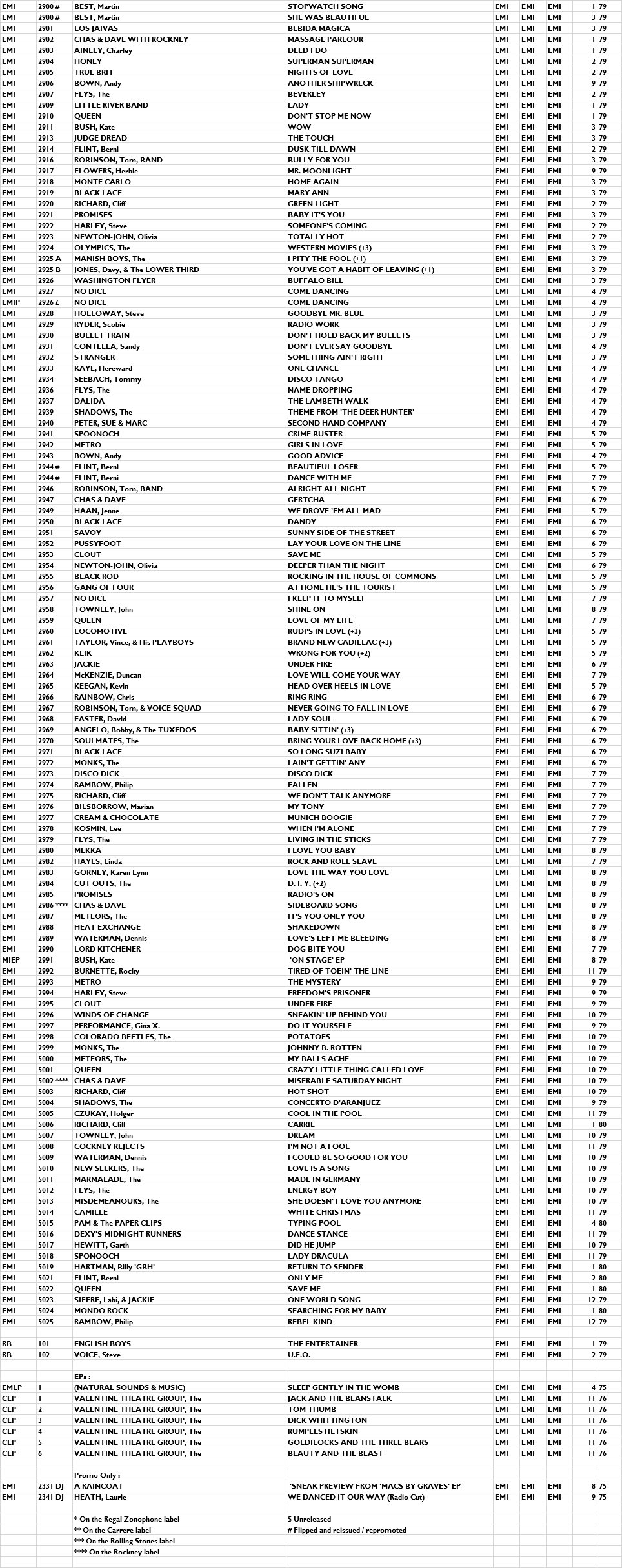


Copyright 2006 Robert Lyons.

